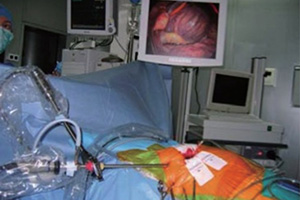Total percutaneous femoral vessels cannulation for minimally invasive mitral valve surgery
Abstract
Background: Minimally invasive mitral valve surgery (MIMVS) has experienced several technological changes in the last two decades. Our aim was to describe one of the most recent improvements, the utilization of a total percutaneous femoral vessels cannulation technique during MIMVS.
Methods: We performed a retrospective observational analysis of this technique among 300 consecutive MIMVS patients, with particular focus on cannulation aspects of MIMVS, its success rate and potential complications.
Results: From October 2008 to December 2012, 300 patients (60% males) were operated on. Mean age was 62.9±16.4 years. Indications for operation included mitral valve repair (93%) and mitral valve replacement (7%). Two femoral arterial catheterizations failed and required conversion to sternotomy. The complications on the arterial side were: 5 (1.6%) cases of bleeding during the introduction of Prostar leading to a preoperative surgical hemostasis; 2 (0.6%) retroperitoneal bleeds during cardiopulmonary bypass requiring difficult surgical control but with an uneventful follow-up; 6 (2%) bleeding episodes after removal of the arterial cannula easily controlled by direct surgical revision; 1 (0.3%) arterio-venous fistula requiring a surgical correction on postoperative day 32; 1 (0.3%) patient had a transitory claudication due to a superficial femoral artery thrombosis progressively compensated by the collateral circulation. There were no postoperative bleeding complications. There were no other complications linked to the femoral cannulations or to the groin occurred during the follow-up. The percentage of uneventful arterial cannulations was 80% among the first 50 patients (N=10 out of 50) and 98.8% thereafter (N=3 out of 250).
Conclusions: Total percutaneous femoral vessels cannulation technique is particularly suitable for MIMVS with a high success rate and few complications after a short learning curve. With the advent of the percutaneous approach, the traditional complications of the groin incision have completely disappeared in modern operations with no groin infection, hematoma or lymphocele.
Cover






